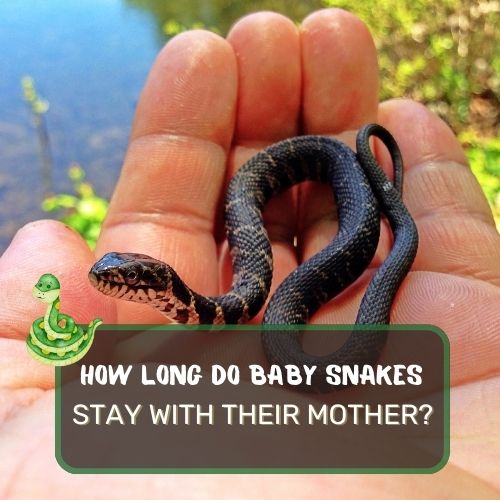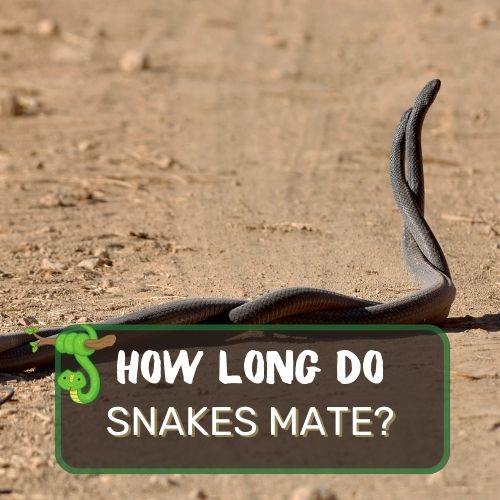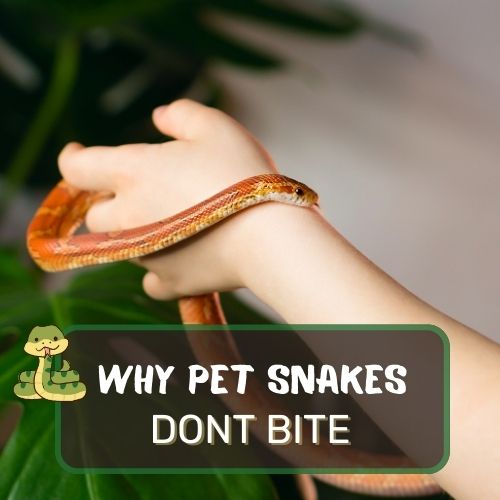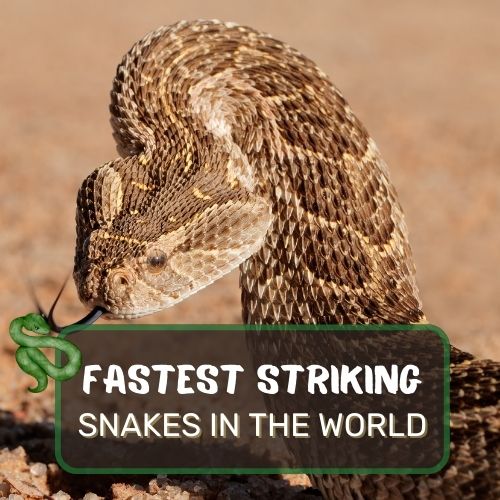
When it comes to the intriguing world of snakes, one question that often arises is, “How long do baby snakes stay with their mother?”
Understanding the dynamics of this maternal bond is not only captivating but also essential to gain insights into the survival and growth of these fascinating reptiles.
Let’s dive into the captivating realm of baby snakes and the crucial role their mothers play in their early lives.
Table of Contents
- 1 How long do baby snakes stay with their mother? (Short Answer)
- 2 General Information on Baby Snakes
- 3 The care provided by mother snakes to their babies
- 4 Factors Affecting Duration of Mother-Baby Relationship
- 5 Specific Cases of Snakes That Abandon Their Young Immediately
- 6 Specific Cases of Snakes that Stay with Their Babies for a Short Time
- 7 Snakes that Stay with Their Young for an Extended Period
- 8 Genetic and Evolutionary Influences
- 9 Implications of Mother-Baby Relationships in Snakes
- 10 FAQ
- 11 Conclusion
How long do baby snakes stay with their mother? (Short Answer)
Baby snakes are largely independent from the moment they are born or hatched. Most snake species lay eggs, and once the mother lays her eggs, she typically leaves them to incubate on their own. After hatching, the baby snakes are on their own and receive no parental care. There are a few snake species, like some vipers and boas, that give birth to live young. Even in these cases, the mother does not provide extended care. She may stay with her young for a short period, often just a few hours to a day, mainly to recover from the birthing process. After this brief period, the baby snakes venture out independently.
General Information on Baby Snakes

Overview of different snake species and their reproductive behavior
Snake species exhibit a diverse range of reproductive behaviors. Some are oviparous, meaning they lay eggs, while others are viviparous, giving birth to live offspring.
Each species has its own unique approach to parenting, tailored to their environments and lifestyles.
Explanation of oviparous and viviparous snakes
Oviparous snakes, such as rattlesnakes, vipers, and cobras, lay eggs in a carefully chosen location.
Once the eggs are deposited, the mother’s responsibility ends there, and the eggs are left to develop and hatch on their own.
On the other hand, viviparous snakes, like boas and garter snakes, nurture their young internally, providing them with sustenance and protection until they are ready to be born.
The care provided by mother snakes to their babies

Though reptiles are often seen as distant parents, some snake species exhibit remarkable care for their offspring. For instance, mother boas, after giving birth to live young, stay with them for a short period, providing them with warmth and protection.
Similarly, certain species of pit vipers guard their eggs until hatching, ensuring the safety of their yet-to-be-born babies.
As we delve deeper into the intricacies of the bond between baby snakes and their mothers, we uncover a world of wonder and survival strategies that have evolved over millions of years.
Understanding this relationship provides us with a glimpse into the complexities of nature’s design, where even the most unlikely creatures display traits of care and protection for their young.
Let’s continue our journey into the world of baby snakes and explore how they embark on their perilous journeys, guided by the wisdom of their mothers.
Factors Affecting Duration of Mother-Baby Relationship
Species-specific differences in maternal care
The duration of the mother-baby relationship in snakes varies greatly across different species.
Some mothers show unwavering dedication, protecting and caring for their young, while others have a more hands-off approach, leaving their offspring to fend for themselves shortly after birth or hatching.
Several snake species exhibit some form of maternal care:
- African Rock Python (Python sebae): After laying her eggs, the female coils around them, guarding against predators and occasionally shivering to produce heat for incubation.
- Rattlesnakes (Crotalus spp.): Some species give birth to live young and may stay with them for a short period post-birth, offering protection.
- Green Anaconda (Eunectes murinus): The largest snake in the world gives birth to live young and may stay with them briefly to guard against threats.
- King Cobra (Ophiophagus hannah): A unique species where the female builds a nest for her eggs and guards them until they hatch.
These instances of care are relatively brief, and once the young are capable, they venture out on their own.
Environmental factors influencing the duration
The environment plays a crucial role in shaping the dynamics of the mother-baby relationship.
In harsh and unpredictable environments, where resources are scarce and threats are abundant, mothers may need to abandon their young to conserve their own energy and increase their chances of survival.
Conversely, in more stable and resource-rich environments, snake mothers may afford to invest more time and effort into nurturing their offspring.
Predation risks for baby snakes

For baby snakes, the world can be a perilous place, filled with potential predators lurking at every turn.
Predation risk is a significant factor influencing the duration of the mother-baby relationship.
In regions with high predator densities, such as areas inhabited by birds, mammals, and other snake species, mother snakes might need to leave their young shortly after birth or hatching to avoid attracting attention to their vulnerable offspring.
Specific Cases of Snakes That Abandon Their Young Immediately
Not all snakes display the same level of parental care. In some species, mothers leave their offspring immediately after giving birth or laying eggs. This seemingly harsh behavior has its own evolutionary advantages.
Why do some snakes leave their offspring immediately
For certain snake species, immediate abandonment of offspring is an adaptive strategy. These snakes often inhabit environments where resources are scarce and widely dispersed.
By not investing time or energy in caring for their young, the mother can focus on her own survival and reproductive success.
In such environments, the chances of offspring survival are low anyway, so the strategy of producing a large number of offspring and leaving them to their own devices increases the odds of some individuals surviving to adulthood.
Snake species that leave their young
One classic example of snakes that abandon their young immediately is the green anaconda (Eunectes murinus). After giving birth to live young, the mother shows no interest in caring for them.
The young snakes must fend for themselves from the moment they enter the world. Another example is the hognose snake (genus Heterodon), which lays eggs but does not provide any parental care after that.
The eggs are left buried in the ground, and the hatchlings are on their own once they emerge.
Understanding the contrasting approaches to parenting in snake species provides a fascinating glimpse into the intricacies of nature’s strategies for survival.
While some snakes have evolved to be devoted mothers, others have adopted a more pragmatic approach to increase their chances of passing on their genes to the next generation.
The interplay of genetics, ecology, and evolution has shaped these behaviors over millions of years, resulting in the captivating diversity we observe among these slithering reptiles.
Specific Cases of Snakes that Stay with Their Babies for a Short Time

Overview of snakes that provide some level of parental care
While most snake species adopt a more hands-off approach to parenting, some do exhibit a degree of parental care, albeit for a relatively short duration.
These snakes demonstrate behaviors that involve protecting their offspring during the initial stages of life.
Duration and extent of this care
In snakes with short mother-baby relationships, the maternal care provided typically lasts from a few days to a few weeks.
During this period, the mother may offer protection, warmth, or guidance to the young, increasing their chances of survival during the vulnerable early stages of life.
Examples of snake species with short mother-baby relationships
One notable example of a snake with a brief mother-baby relationship is the California kingsnake (Lampropeltis getula californiae).
After laying eggs, the mother may stay with the hatchlings for a short time, ensuring they get off to a good start.
Similarly, some species of garter snakes (Thamnophis) exhibit a limited period of maternal care, ensuring their neonates have a better chance of survival before venturing out into the world on their own.
Snakes that Stay with Their Young for an Extended Period

Detailed examination of snakes that exhibit prolonged maternal care
In contrast to snakes with short mother-baby relationships, some species display an extraordinary commitment to their offspring, providing extended maternal care that goes beyond the early stages of life.
These snakes invest significant time and energy into ensuring their young thrive.
Reasons behind this behavior
Extended maternal care in snakes is often associated with factors such as complex social structures and challenging environments.
In species where young snakes face numerous threats, remaining close to the mother for a more extended period can offer protection and enhance their survival odds.
Additionally, snakes that exhibit social behaviors, such as forming family groups, are more likely to display prolonged maternal care.
Examples of snake species with extended mother-baby relationships
The reticulated python (Python reticulatus) is an impressive example of a snake with an extended mother-baby relationship.
These giant snakes can grow up to 20 feet or more in length and are known to incubate their eggs by coiling around them to provide warmth and protection.
Once the eggs hatch, the mother may remain near the hatchlings for several weeks, ensuring they receive essential protection and guidance during their early stages.
Another fascinating example is the African rock python (Python sebae).
These snakes are fiercely protective of their offspring, and mother pythons have been observed actively guarding their young for an extended period, sometimes even beyond a year.
Such behavior is believed to contribute to the survival and development of the offspring, giving them a better chance to mature and adapt to their surroundings.
These exceptional cases of extended maternal care in snakes demonstrate the complexity of parenting strategies among reptiles.
From minimal involvement to dedicated nurturing, the variety of approaches highlights the adaptability of snakes to diverse environments and the essential role that maternal care plays in their survival and perpetuation as a species.
Understanding these behaviors not only deepens our appreciation for these enigmatic creatures but also provides valuable insights into the intricate balance of nature’s grand design.
Genetic and Evolutionary Influences
Evolutionary advantages and disadvantages of different parenting strategies
The diverse range of parenting strategies observed in snake species can be attributed to their respective evolutionary advantages and disadvantages.
Snakes that provide extended maternal care often do so in environments where the survival of their offspring is challenging.
By investing more time and effort into their young, these snakes increase the chances of their genes being passed on to the next generation.
On the other hand, snakes with short mother-baby relationships prioritize producing a larger number of offspring, hoping that a few will survive the perils of their environment.
This strategy maximizes the spread of their genetic material but comes with the trade-off of lower individual survival rates.
Genetic predispositions affecting maternal care
The propensity for maternal care in snakes is, to some extent, influenced by genetic factors.
Some species have inherited behaviors that drive them to care for their offspring, while others have inherited instincts to prioritize their own survival over parental investment.
Over time, these genetic predispositions have become ingrained in their species’ biology through the process of natural selection, shaping the variation in maternal care strategies observed among different snake populations.
Implications of Mother-Baby Relationships in Snakes

Impact on offspring survival and growth
The duration and extent of the mother-baby relationship have a profound impact on the survival and growth of snake offspring.
Species with prolonged maternal care provide their young with critical guidance, protection, and access to resources, increasing the chances of survival during the most vulnerable stages of life.
On the other hand, species with minimal maternal care depend on the “survival of the fittest” approach, where only the most resilient individuals survive, potentially leading to lower overall population growth.
Influence on the snake population dynamics
The varying levels of maternal care among snake species contribute significantly to the dynamics of their populations.
Snakes with extended maternal care may have slower population growth rates, but they often produce individuals that are better equipped to survive and reproduce successfully.
Conversely, snakes with short mother-baby relationships may have higher population growth rates, but they rely on the sheer number of offspring to ensure the survival of at least some individuals.
Significance for conservation efforts
Understanding the intricacies of mother-baby relationships in snakes is crucial for conservation efforts.
Conservationists must consider the unique reproductive behaviors of different snake species when devising strategies to protect and sustain their populations.
Protecting habitats that support a diversity of maternal care strategies can help maintain healthy snake populations and preserve the delicate balance within ecosystems.
Furthermore, studying these behaviors can aid in identifying species that might be more susceptible to threats and thus require targeted conservation measures.
In conclusion, the captivating world of mother-baby relationships in snakes offers a glimpse into the complexity of nature’s design.
From minimal involvement to devoted care, the range of parenting strategies demonstrates the adaptability of snakes to diverse environments.
Genetic and evolutionary influences play a significant role in shaping these behaviors, as species have developed distinct strategies to thrive in their respective habitats.
Understanding the implications of these maternal care strategies not only enriches our knowledge of these enigmatic creatures but also fosters a deeper appreciation for the delicate balance that exists in the natural world.
FAQ
Can snake eggs hatch without a mother?
Yes, snake eggs can hatch without the presence of the mother. Oviparous snake species lay their eggs in carefully chosen locations, and the eggs are equipped with the necessary nutrients and protection to develop and hatch on their own. The mother’s role typically ends with laying the eggs, and the offspring are left to fend for themselves after hatching.
Do Mother snakes stay close to their babies?
It depends on the snake species and their parenting strategies. Some snake mothers exhibit dedicated maternal care, staying close to their babies for a certain period, providing protection, warmth, and even guidance. However, other snake species, particularly those with short mother-baby relationships, may leave their offspring shortly after birth or hatching.
Should I be worried if I see a baby snake?
Encountering a baby snake should be approached with caution and respect, but not undue fear. Most baby snakes are not inherently dangerous, and they are often more timid than adult snakes.
However, it’s essential to identify the species correctly, as some baby snakes can be venomous. If in doubt, it’s best to maintain a safe distance and avoid handling or provoking the snake.
Do snakes hatch inside their mothers?
No, snakes do not hatch inside their mothers. While some snake species give birth to live young (viviparous snakes), the embryos develop inside eggs within the mother’s body. Once fully developed, the mother gives birth to live offspring. Other snake species lay eggs (oviparous snakes) externally, and the eggs hatch outside the mother’s body.
Conclusion
In this exploration of mother-baby relationships in snakes, we’ve witnessed the incredible diversity of parenting strategies that have evolved over millions of years.
From snakes that abandon their young immediately to those that invest extensive time and effort into caring for their offspring, each species’ approach reflects the unique challenges they face in their environments.
Understanding these maternal care strategies is not only fascinating but also crucial for conservation efforts.
By appreciating the significance of mother-baby relationships, we can better protect snake populations and the delicate ecological balance they contribute to.
As we delve deeper into the intricate world of snakes, we gain valuable insights into the complexities of nature’s design.
Genetic and evolutionary influences have shaped these behaviors, highlighting the remarkable adaptability of snakes to their surroundings.
In a world filled with remarkable creatures, the study of mother-baby relationships in snakes reminds us of the interconnectedness of all living beings.
Whether slithering silently through the undergrowth or coiled protectively around their young, snakes contribute to the rich tapestry of life on Earth.
Let us continue to explore and appreciate the wonders of nature, ensuring the preservation of these mesmerizing reptiles for generations to come.




0 Comments